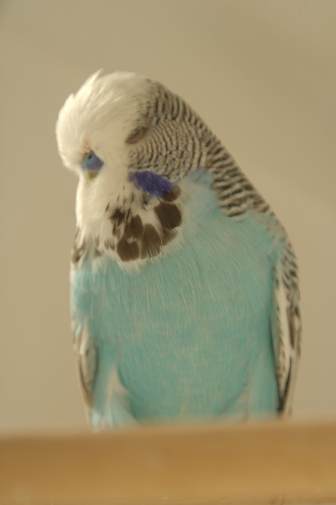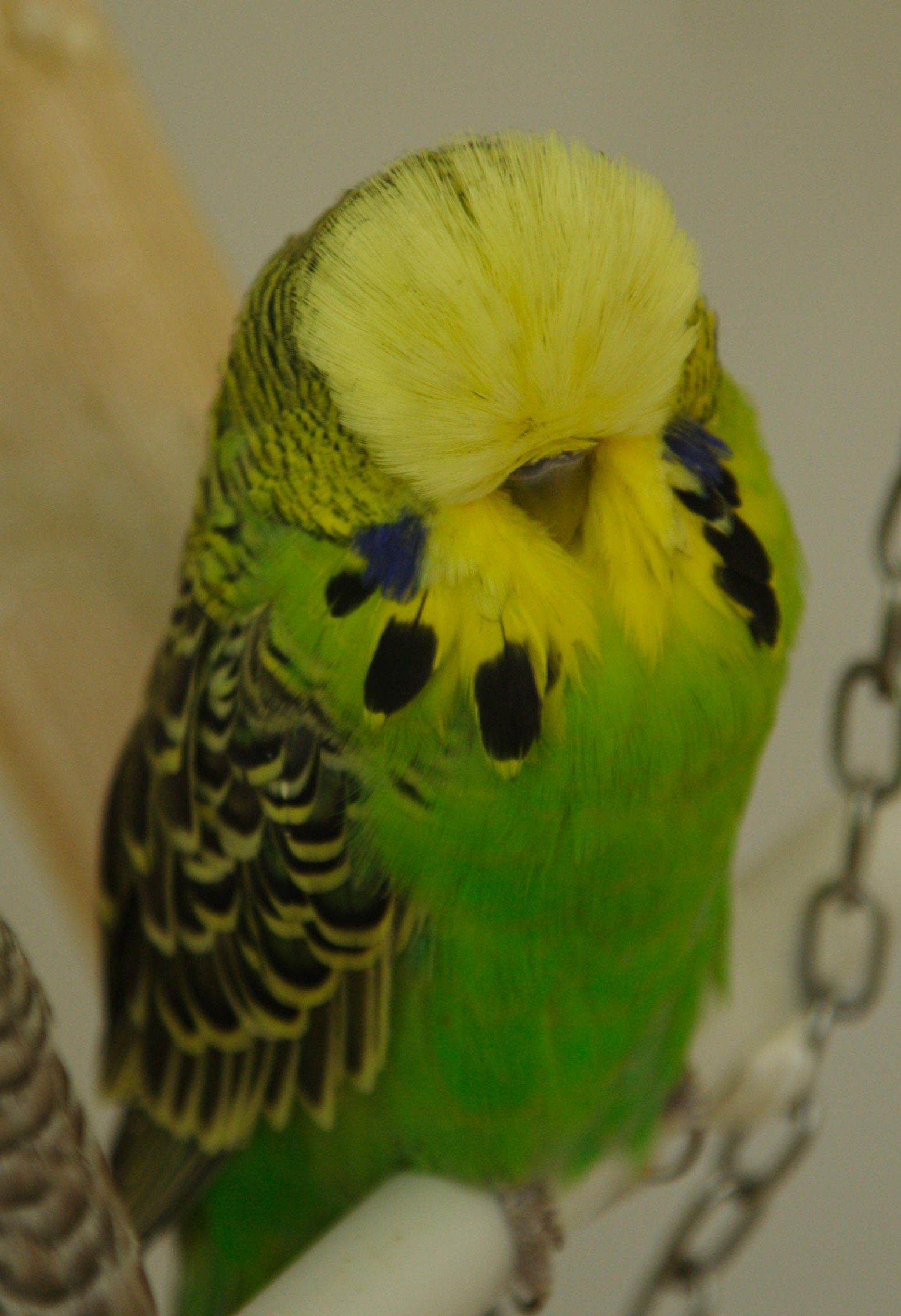A Stud's Development
I thought I'd document the development of my stud, not that I have a stud yet but it's got to the point where it's not entirely a collection of budgies where are a few related.
In the beginning
Looking back over the last two years since I started up again, there have been only a few birds that stand out as being the main ancestors of my current birds.
The Cinnamon Family
This family began with a pair from Dave Swann.
A Cinnamon Light Green cock and a Cinnamon Grey hen.
The hen was bred from a hen I bred in the very last nest when I packed in last time. From June 2008 to May 2009 they were paired together and I was extemely pleased with their youngsters. They didn't breed more than three youngsters per round, but they had five rounds and seven cocks and seven hens. Unfortunately two hens died quite young including the best from trichiamonasis. Here's a picture of the best of the cocks they bred, but there's not a great deal of difference between the best four of the cocks (three of them are Cinnamon Sky Blues and I have to put them in a show cage to sort which is which. The father seems to be the main source of the quality of the youngsters.

This family excels in feather and form, though greater size is something the family needs. In a show cage, the cocks stand well and show themselves which is an excellent trait for a show bird.
(The original Cinnamon Sky hen has died, but the cock is now four years old and on his second round of six youngsters [May 2010].)
The Grey Family
A Grey cock from Alan Ramsden bred a very nice Grey cock when paired up to a Grey Pied hen also Alan Ramsden. Unfortunately, it was their only youngster as the hen was past her best. So I repaired him to a good Grey Green hen that Ray Brown (of Leicester) had bred and had been given to me by Jeff Davis. They bred fairly well, producing two more Grey cocks and four hens a Grey, Grey Green and two Sky Blues. The hens were all of good quality matching the first cock, but two Grey cocks were noticeably not as good.All of the youngsters, but one, were of good size, wide heads and good deportment with reasonable feather. When these youngsters appeared from the nest box, I knew I had some birds of high enough quality to pair to the youngsters of the Cinnamon family.
Other Youngsters
I did breed other youngsters at the same time as the youngsters from these two families, but it is these two sets of youngster that formed by breeding team for 2010. None of these others had high enough quality to be considered for future use. However I have a weakness for Lacewings, so I did put two pairs to breed but they didn't too well as far as quality. I've kept the best of these youngsters and will start breeding to better birds.The Huxley Cock
When my club Leicestershire B.S. went on an aviary visit in 2009 to Chris Huxley and Alan Marchant, Rob Keeber managed to prise from Chris a 2006 Light Green cock for the raffle. Yours Truly won the cock and put him to breed with the best daughter from the Cinnamon family. Before finally falling from his perch he produced five hens of very good quality. The hens will probably be important to the pairings later in 2010.2010 Breeding Season - The Start
Five of the youngsters from the Cinnamon family, plus their father formed the first six pairs when I started my 2010 breeding season (just after the bad weather stopped in mid-January). Three of the pairs were to two of the hens from the Grey family and to the best cock of that family, I was hoping that the slight better size of the Grey family would add to the feather of the Cinnamon family without pulling the quality of the Cinnamons down noticeably. All three pairs have produced some good youngsters, time will tell how good. They are now coming to the end of their second rounds and the youngsters are good enough for me to leave them for a third round.The best Cinnamon family daughter, a Cinnamon Light Green (originally paired to the Huxley cock) was paired to another cock, this one from Dave Swann, a Light Green and a half-uncle to the hen. In the first round only two youngsters were produced, but one is exceptional in size and looks.

He has seven siblings in total, notably a Sky hen and Light Green cock stand out. So these three siblings will form key pairings next year.
There are some double First cousins to these youngsters, I paired a sister to their mother to a brother of their father. They are not in the same league but I'm very happy with them.
The three pairings involving the brother's and sisters of the Cinnamon family to the Gray family have worked well. Most of the youngsters are well worth keeping, though the fertility has not been great.
The final pairing of note is that of the original Cinnamon Light Green cock that produced the Cinnamons in the first year. I paired him to a Dominant Pied Cinnamon Sky hen from Dave Swann, the hen doesn't look much compared with the cock but she a prolific breeder and most of her chicks are better than her. With this cock she's bred 19 more in four rounds, including my first C.C. winner. I'm hoping that the fertility of this hen will pass on to her chicks. Unfortunately, the chicks are particularly susceptible to the french moult virus currently in my shed, over a half have been affected and some have not recovered their feathers.